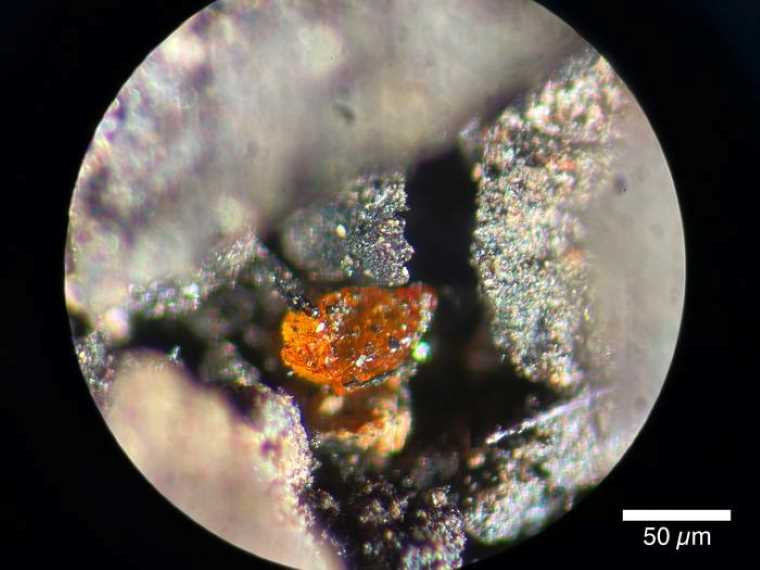Scientists have recorded the first known discovery of amber in Antarctica, providing irrefutable proof that Earth’s frozen southernmost continent was once temperate enough to support resin-producing trees.
Made of fossilized tree resin, amber, which has been used throughout history as jewelry and even as a healing gemstone in folk medicine, was made famous in the 1993 movie Jurassic Park for holding the ancient DNA used to clone dinosaurs.
Dr. Johann P. Klages from the Alfred Wegener Institute, Helmholtz Centre for Polar and Marine Research, and Dr. Henny Gerschel from the TU Bergakademie Freiberg, announced that they had recovered the ancient amber in 2017 in a sediment core retrieved from a depth of 946 meters thanks to the seafloor drill rig MARUM-MeBo70. Due to its location in the Pine Island Bay of the Amundsen Sea Embayment, the researchers named their historic find “Pine Island amber.”
Before this discovery, scientists had found amber on six of Earth’s seven continents, with Antarctica representing the last holdout. As the first discovery of amber at this extreme latitude, the sample confirms that the continent once supported a temperate forest that included resin-producing trees.
“It was very exciting to realise that, at some point in their history, all seven continents had climatic conditions allowing resin-producing trees to survive,” Klages said of the team’s historic discovery.
“The analysed amber fragments allow direct insights into environmental conditions that prevailed in West Antarctica 90 million years ago,” adds Klages, whose team previously reconstructed Antarctica’s theoretical forest in a Nature study from 2020.
Amber From Antarctica Yields Clues on Continent’s Ancient Past
Due to the sample’s small size—70mm across—the team had to air dry it before handling it. The team then cut it into 1mm thick slices to perform several laboratory experiments. These included analyzing the Antarctica amber with reflected light and fluorescence microscopy.
According to the researchers, this effort yielded significant discoveries about the environment that supported the tree where the amber’s resin originated. The tests also offered previously unknown details about the amber sample itself.
“The Antarctic amber likely contains remains of original tree bark as micro-inclusions,” explained Gerschel, once a member of staff at the TU Bergakademie Freiberg and now a consultant at the Saxon State Office for the Environment, Agriculture and Geology. “Considering its solid, transparent, and translucent particles, the amber is of high quality, indicating its burial near the surface, as amber would dissipate under increasing thermal stress and burial depth.”


Further Tests Will Let Researchers ‘Journey Into the Past’
The team plans to test the sample further. If successful, those analyses should reveal even more clues about the ancient Antarctic environment that supported resin-producing trees.
“Our discovery is another piece of the puzzle and will help us gaining a better understanding of the swampy, conifer-rich, temperate rainforest environment identified near the South Pole during the mid-Cretaceous,” said Gerschel.
The Antarctica amber has already helped the researchers reconstruct the continent’s environment from 90 million years ago. Moving forward, the team hopes to find even more samples to complete the picture of this ancient forest ecosystem.
“Our goal now is to learn more about the forest ecosystem – if it burned down if we can find traces of life included in the amber,” said Klages. “This discovery allows a journey to the past in yet another more direct way.”
The study, “First Discovery of Antarctic Amber,” was published in Antarctic Science.
Christopher Plain is a Science Fiction and Fantasy novelist and Head Science Writer at The Debrief. Follow and connect with him on X, learn about his books at plainfiction.com, or email him directly at christopher@thedebrief.org.

